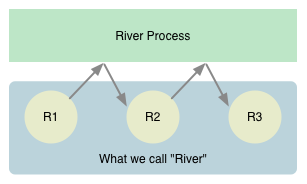- Wikipedia: Noctis (Web page)
- Noctis - Official site (Web page)
- Proteus - early prototype screenshots (Blog post)
- Gamasutra: The Making of Elite (Video)
- The Brilliance of Dwarf Fortress
- Interview with Tarn Adams (creator of Dwarf Fortress) (Slides) (Video)
- Procedural World: Real men don't draw buildings (Blog post)
- Procedural World: Building Rooms (Blog post)
- Procedural World: A room with an angle (Blog post)
- P Müller: Procedural Modeling of Cities (Google Scholar)
- P Müller: Automatic reconstruction of Roman housing architecture (Google Scholar)
- P Müller: Procedural 3D reconstruction of Puuc buildings in Xkipche (Google Scholar)
- P Müller: Procedural modeling of buildings (Google Scholar)
- P Müller: Interactive Geometric Simulation of 4D Cities (Google Scholar)
- Red Blob Games: Polygonal Map Generation (Blog post)
- MinecraftWiki: Far Lands (Web page)
- Fibonacci grids: A novel approach to global modelling (Google Scholar)
- Terrain Generation Using Procedural Models Based on Hydrology
Games that currently use procedural generation:
- Noctis
- Dwarf fortress
- Canabalt
- Minecraft
- Love
- Spelunky
- Evolve Your Hierarchy: Refactoring Game Entities with Components (Blog post)
- Richard Lord: What is an entity framework for game development? (Blog post)
- Richard Lord: Why use an entity framework for game development? (Blog post)
- Game Programming Patterns: Components (Web page)
- Pitfalls of Object Oriented Programming (PDF Slides)
- Practical Examples in Data Oriented Design (Slides)
- Introduction to Data-Oriented Design (Slides)
- Managing Decoupling Part 4 — The ID Lookup Table (Blog post)
- Games From Within: Data-Oriented Design (Or Why You Might Be Shooting Yourself in The Foot With OOP) (Blog post)
- Games From Within: The Always-Evolving Coding Style (Blog post)
- Games From Within: Managing Data Relationships (Blog post)
- Games From Within: Data-Oriented Design Now And In The Future (Blog post)
- Bjoern Knafla: Naive Object-Oriented Behavior Tree Isn’t Data-Oriented
- Bjoern Knafla: Data-Oriented Behavior Tree Overview (Blog post)
- High-Performance Programming with Data-Oriented Design (PDF)
- HaskellWiki: Functional Reactive Programming (Web page)
- HaskellWiki: Yampa/game engine (Web page – Pretty flow charts!)
- Gerold Meisinger: Why I switched from component-based game engine architecture to functional reactive programming (Blog post)
- Gerold Meisinger: Functional Reactive Programming (Slides)
- LambdaCube 3D: The LambdaCube 3D pipeline model (Blog post)
- LambdaCube 3D: Motivations and background (Blog post)
- The Unofficial Guide to Rich Hickey's Brain (Blog post)
- Elm: Evan Czaplicki (Google) @ MLOC.JS (Video)
- Creating an Earthlike Planet (A long-time favorite)
- NPR: At Home In Fantasy's Nerd-Built Worlds
- Earth's Dynamic Systems - to download PDFs:
$ wget -r --no-parent http://www.earthds.info/pdfs/
- Nsibidi
- Dongba symbols
- Mi'kmaq hieroglyphic writing
- Blissymbols
- The New Yorker: John Quijada and Ithkuil, the Language He Invented
- Ithkuil: A Philosophical Design for a Hypothetical Language
- The Truth Behind Homogeneous Coordinates
- Arcsynthesis: Quaternion intoperlation (Web page)
- Jonathan Blow: Hacking Quaternions (Web page)
- Jonathan Blow: Understanding Slerp, Then Not Using It (Web page)
- Geometric Algebra For Computer Science
- Marc ten Bosch: 4D Rotations and the 4D equivalent of Quaternions
- Ken Shoemake: Quaternions (PDF)
- Google Code: fractalterraingeneration
- Efficient computational noise in GLSL (PDF)
- WebGL implementation (Github)
- Supplement (PDF)
- Simplex noise demystified (PDF)
- More material
- Learning Modern 3D Graphics Programming (Web page)
- open.gl tutorials website (Web page)
- Primer : Shaders (Blog post)
- The Basics of GLSL 4.0 Shaders (Tutorial)
- Crash Course on Notation in Programming Language Theory
- [Interactive Tutorial of the Sequent Calculus](http://logitext.mit








